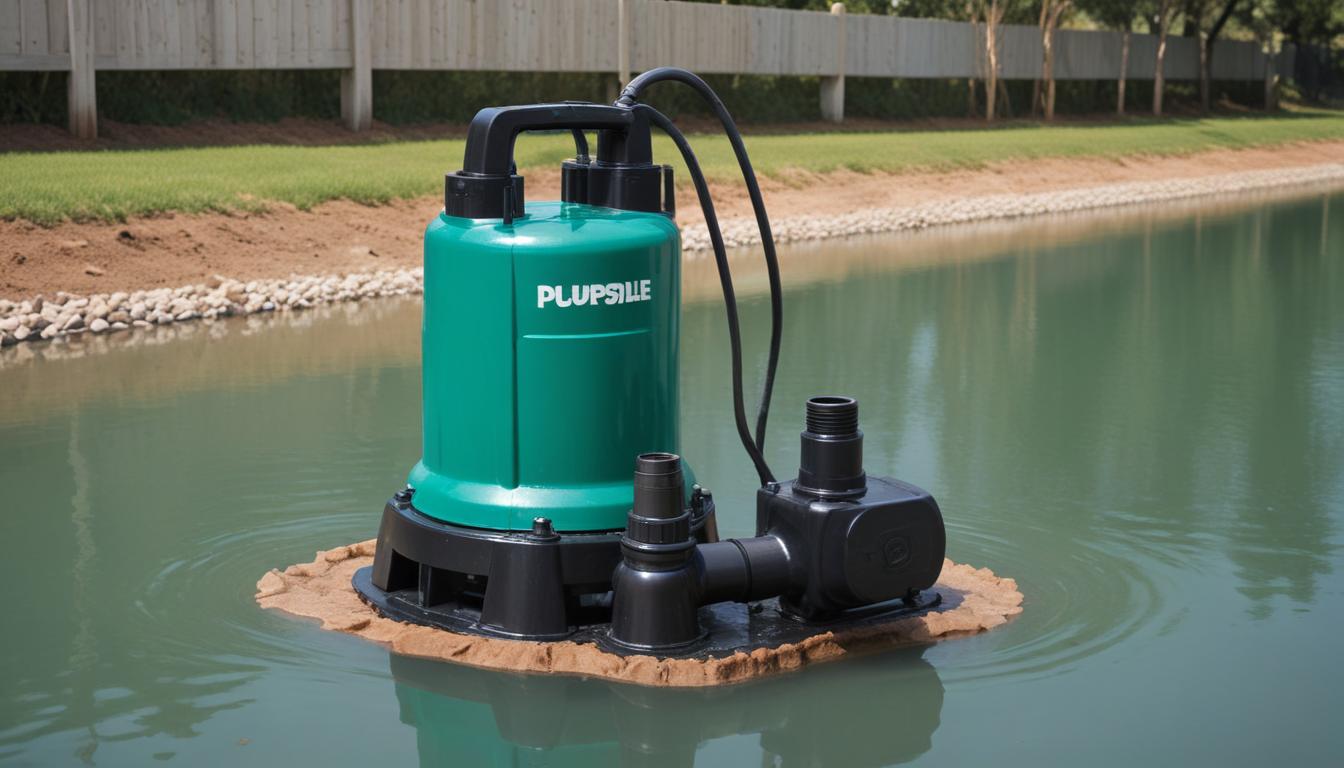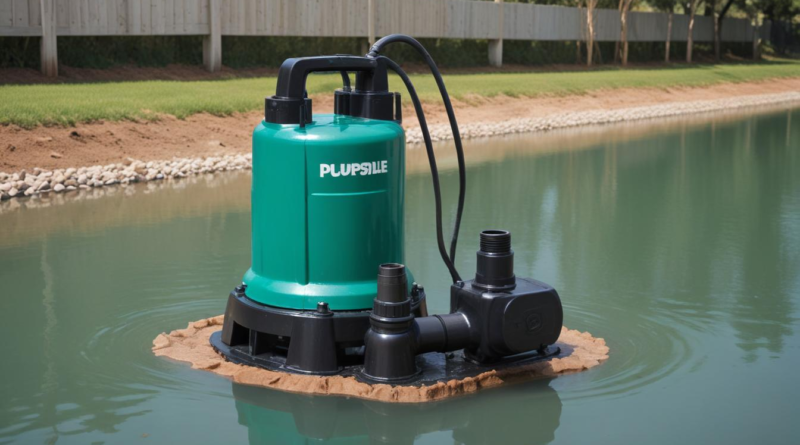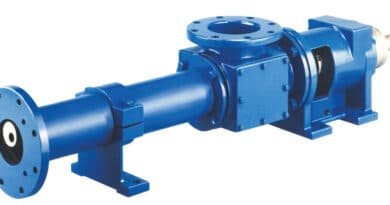guide to submersible pumps
There are several distinct categories of submersible pumps, each designed to cater to specific applications and environments. Understanding the various types can aid in selecting the appropriate pump for your needs.
| Type | Application | Features |
|---|---|---|
| Well Pumps | Extracting groundwater from wells | Designed for deep installation, typically powered by electric motors |
| Sump Pumps | Removing water from sump pits in basements | Automatic activation features, suitable for handling intermittent water levels |
| Sewage Pumps | Pumping wastewater and sewage | Built with robust materials to handle solids, often includes grinder mechanisms |
| Grinder Pumps | Grinding and pumping sewage | Includes grinding components to break down solid waste, suitable for confined spaces |
| Constant Pressure Pumps | Maintaining consistent water pressure in systems | Equipped with pressure sensors and variable speed controls to regulate output |
| Solar Submersible Pumps | Utilizing solar energy for water pumping | Eco-friendly, ideal for remote locations with ample sunlight |
- Multi-Stage Pumps: Feature multiple impellers to increase pressure, suitable for deep wells and high-pressure requirements.
- Chemically Resistant Pumps: Designed to handle corrosive fluids, ideal for industrial applications.
- High-Temperature Pumps: Capable of operating in elevated temperature environments, often used in geothermal systems.
Selecting the correct type of submersible pump involves assessing the specific requirements of the application, including the fluid characteristics, required flow rate, and the environmental conditions where the pump will operate. Proper installation and understanding of each pump type’s maintenance needs further ensure optimal performance and longevity.
how submersible pumps work
Submersible pumps operate by being fully submerged in the liquid they are intended to move, utilizing the surrounding fluid to aid in cooling and providing a seal against contaminants. The core functionality hinges on the seamless integration of several key components, each playing a critical role in the pump’s overall performance.
Key Components:
- Electric Motor: The powerhouse of the pump, converting electrical energy into mechanical motion to drive the impellers.
- Pump Housing: A sealed enclosure that protects the motor and internal components from the surrounding environment, ensuring durability and preventing water ingress.
- Impellers: Rotating blades that generate centrifugal force, creating the necessary pressure to move the fluid through the system.
- Seal Package: Essential for preventing water from entering the motor casing, thereby safeguarding the electrical components from damage.
- Cabling: Robust wiring that connects the pump to the power source, often armored to withstand harsh conditions underwater.
The operational process of a submersible pump can be delineated into several stages:
- Activation: Upon receiving an electrical signal, the motor initiates rotation, setting the impellers into motion.
- Fluid Intake: As the impellers spin, they create a low-pressure zone at the intake, drawing the liquid into the pump.
- Pressure Generation: The rotating impellers accelerate the fluid outward, increasing its velocity and converting it into pressure energy.
- Discharge: The pressurized fluid is expelled through the discharge pipe, moving it to the desired location.
- Cooling: The surrounding liquid acts as a coolant, dissipating the heat generated by the motor, which enhances efficiency and prolongs the pump’s lifespan.
Operational Mechanism:
| Stage | Description |
|---|---|
| 1. Activation | The electrical motor receives power and begins to rotate the impellers. |
| 2. Fluid Intake | Impellers create suction, drawing water into the pump housing. |
| 3. Pressure Generation | Rotational energy converts into kinetic energy, increasing fluid pressure. |
| 4. Discharge | Pressurized water is expelled through the discharge pipe to the required application. |
| 5. Cooling | The surrounding water cools the motor, maintaining optimal operating temperatures. |
Sealing and Protection: The integrity of the seal package is paramount, as it ensures that the motor remains dry despite the pump’s submersion. This protection is vital for preventing electrical failures and maintaining safe operation, particularly in environments with fluctuating water levels or the presence of contaminants.
Efficiency Factors: Several factors influence the efficiency of submersible pumps, including the design of the impellers, the speed of the motor, and the quality of the sealing mechanisms. Proper installation and regular maintenance are essential to sustain optimal performance, prevent wear and tear, and extend the lifespan of the pump.
Understanding the intricate workings of submersible pumps not only facilitates effective installation but also aids in troubleshooting and maintaining the system, ensuring reliable and continuous operation across various applications.
choosing the right pump
Selecting the appropriate submersible pump requires a comprehensive evaluation of several critical factors to ensure optimal performance and longevity. The decision-making process should consider the specific needs of the application, the characteristics of the fluid being pumped, and the environmental conditions in which the pump will operate.
Key Considerations:
- Flow Rate and Head: Determine the required flow rate (measured in gallons per minute or liters per second) and the total dynamic head (the height the pump needs to raise the water) necessary for your application. Accurate calculations ensure the pump can handle the volume and pressure needed.
- Power Supply: Assess the available power sources, whether electrical, solar, or otherwise. Ensure the pump’s power requirements align with what is accessible at the installation site.
- Fluid Characteristics: Consider the properties of the fluid, including temperature, viscosity, and the presence of solids or corrosive substances. This will influence the choice of materials and pump design to prevent premature wear or damage.
- Environmental Conditions: Evaluate the installation environment, such as submerged depth, ambient temperature, and potential exposure to contaminants. Pumps designed for harsh environments offer enhanced durability and reliability.
- Size and Space Constraints: Ensure the physical dimensions of the pump fit within the designated installation area. Compact designs may be necessary for confined spaces.
- Energy Efficiency: Opt for pumps with high energy efficiency ratings to reduce operational costs and minimize environmental impact. Variable speed drives can adjust performance based on demand, enhancing efficiency.
- Budget and Total Cost of Ownership: Balance the initial purchase price with long-term costs, including energy consumption, maintenance, and potential repairs. Investing in a higher-quality pump may result in savings over time.
- Brand Reputation and Warranty: Select pumps from reputable manufacturers that offer robust warranties and reliable customer support. This ensures access to genuine parts and professional assistance when needed.
- Future Expansion: Consider potential future requirements, such as increased flow rates or additional features, to select a pump that can accommodate growth without necessitating a complete system overhaul.
Selection Criteria:
| Factor | Description | Considerations |
|---|---|---|
| Flow Rate | The volume of fluid the pump can move per unit time. | Match with application needs to prevent underperformance or excessive energy use. |
| Head | The height the pump can raise the fluid. | Ensure it meets the vertical and horizontal requirements of the system. |
| Power Source | Electric, solar, or other energy inputs. | Compatibility with available infrastructure and energy efficiency. |
| Material Construction | Components made from specific materials to handle different fluids. | Choose corrosion-resistant materials for aggressive environments. |
| Installation Environment | The physical conditions where the pump will operate. | Water depth, temperature, and potential exposure to contaminants. |
| Energy Efficiency | How effectively the pump converts energy into fluid movement. | Higher efficiency reduces operational costs and environmental impact. |
| Cost | Initial and ongoing expenses associated with the pump. | Balance between upfront investment and long-term savings. |
| Brand and Warranty | Manufacturer reputation and warranty terms. | Provides assurance of quality and support for maintenance. |
Decision-Making Process:
- Assess Application Needs: Clearly define the purpose of the pump, including the volume of fluid to be moved, the height it needs to be lifted, and the specific environment it will operate in.
- Evaluate Fluid Properties: Understand the nature of the fluid, such as its corrosiveness, temperature, and presence of particulates, to select compatible materials and pump types.
- Calculate Flow Rate and Head: Use industry-standard formulas or consult with a professional to determine the necessary flow rate and head, ensuring the chosen pump meets these specifications.
- Consider Power Requirements: Ensure the available power supply matches the pump’s needs, and explore energy-efficient options to reduce operational costs.
- Review Physical Constraints: Measure the installation site to confirm the pump’s size and configuration will fit appropriately without hindering other system components.
- Analyze Total Cost of Ownership: Factor in not only the initial cost but also long-term expenses related to energy consumption, maintenance, and potential repairs.
- Research Brands and Warranties: Choose pumps from trusted manufacturers that offer comprehensive warranties and reliable customer support to facilitate installation and maintenance.
- Plan for Future Needs: Anticipate any future changes or expansions in your system to select a pump that offers scalability and adaptability.
By meticulously evaluating these factors, you can confidently select a submersible pump that not only meets your immediate requirements but also provides reliable performance and efficiency for years to come.
installation tips
 Proper installation of submersible pumps is crucial to ensure their optimal performance, longevity, and reliability. Following best practices and adhering to manufacturer guidelines can prevent common issues such as pump failure, inefficient operation, and excessive wear. Below are detailed tips and considerations to facilitate a successful installation process.
Proper installation of submersible pumps is crucial to ensure their optimal performance, longevity, and reliability. Following best practices and adhering to manufacturer guidelines can prevent common issues such as pump failure, inefficient operation, and excessive wear. Below are detailed tips and considerations to facilitate a successful installation process.
Pre-Installation Preparations:
- Site Assessment: Evaluate the installation site to ensure it is suitable for the pump type and application. Consider factors such as water depth, accessibility, and environmental conditions.
- Gather Necessary Tools and Equipment: Ensure you have all required tools, including wrenches, pliers, cable connectors, and mounting hardware. Having the right tools on hand can streamline the installation process.
- Check Pump Specifications: Review the pump’s specifications, including flow rate, head height, power requirements, and material compatibility, to confirm it matches the application needs.
Installation Steps:
- Positioning the Pump:
- Place the pump vertically in the designated well or sump pit, ensuring it is stable and secure to prevent movement during operation.
- Maintain the recommended clearance between the pump and the bottom of the well to avoid debris intake and ensure efficient operation.
- Electrical Connections:
- Use appropriate, waterproof connectors to secure electrical connections, minimizing the risk of short circuits and ensuring a safe power supply.
- Ensure that the power source is compatible with the pump’s voltage and phase requirements. Consult an electrician if necessary to verify the electrical setup.
- Securing the Pump:
- Utilize straps, brackets, or mounting systems as specified by the manufacturer to secure the pump in place, preventing movement that could cause wear or damage.
- Verify that the pump is level to ensure even wear on all components and efficient operation.
- Connecting the Discharge Pipe:
- Attach the discharge pipe securely to the pump’s outlet, ensuring there are no leaks. Use appropriate fittings and sealants as recommended.
- Position the discharge pipe to direct the flow away from the pump and prevent backflow or pooling of water around the installation site.
- Sealing and Waterproofing:
- Ensure all joints and connections are watertight to prevent ingress of contaminants and protect the motor and electrical components.
- Apply waterproof seals or gaskets where necessary, following the manufacturer’s instructions to maintain the integrity of the pump assembly.
- Testing the Installation:
- Before fully submerging the pump, conduct a preliminary test to verify that all connections are secure and that the pump operates correctly.
- Monitor the initial operation for any signs of leaks, unusual noises, or irregular performance, addressing any issues promptly.
Safety Considerations:
- Power Shutdown: Always disconnect the power supply before commencing installation to prevent electric shock or injury.
- Personal Protective Equipment (PPE): Wear appropriate PPE, such as gloves and safety glasses, to protect against debris and accidental contact with electrical components.
- Compliance with Codes: Adhere to local electrical and plumbing codes and regulations, ensuring that the installation meets all safety and operational standards.
Common Installation Challenges and Solutions:
| Challenge | Solution |
|---|---|
| Improper Pump Positioning | Use leveling tools and mounting hardware to ensure the pump is correctly positioned and stable within the well or sump. |
| Electrical Issues | Double-check all electrical connections for compatibility and security. Consult a professional electrician for complex setups. |
| Leaks in Discharge Pipe | Ensure all fittings are tight and use appropriate sealants. Inspect connections regularly during initial operation. |
| Insufficient Cooling | Verify that the pump is fully submerged and that there is adequate water flow around the motor to facilitate cooling. |
Post-Installation Checks:
- Operational Verification: Confirm that the pump runs smoothly without excessive vibration or noise, indicating balanced operation.
- Flow Rate Confirmation: Measure the actual flow rate to ensure it aligns with the pump’s specifications and application requirements.
- System Integration: Ensure that the pump integrates seamlessly with other system components, such as pressure tanks or control switches, functioning as intended.
Adhering to these installation tips not only ensures the efficient operation of your submersible pump but also minimizes the need for frequent maintenance and reduces the likelihood of operational issues. Proper installation lays the foundation for the pump’s performance and durability, making it a critical step in the overall management of your pumping system.
maintenance and troubleshooting
Regular upkeep is essential to ensure the longevity and efficient operation of submersible pumps. Implementing a structured maintenance schedule can prevent unexpected failures and extend the pump’s lifespan. Key maintenance tasks include routine inspections, cleaning, and timely replacement of worn components.
Routine Maintenance Tasks:
- Visual Inspections: Regularly examine the pump and its components for signs of wear, corrosion, or damage. Look for cracks in the pump housing, frayed cables, and loose connections.
- Cleaning: Remove debris and sediment from the pump housing and intake area to prevent blockages. Ensure the impellers are free from obstructions that could impede performance.
- Electrical Checks: Inspect electrical connections for corrosion or damage. Test the insulation of the cables and ensure all connections are secure to prevent short circuits.
- Seal Inspection: Examine the seal package for signs of leakage or deterioration. Replace seals as necessary to maintain the pump’s integrity and prevent water ingress.
- Lubrication: If applicable, lubricate moving parts according to the manufacturer’s recommendations to reduce friction and wear.
- Performance Monitoring: Track the pump’s performance metrics, such as flow rate and pressure, to identify any deviations from normal operation that may indicate underlying issues.
Preventive Maintenance Schedule:
| Task | Frequency | Details |
|---|---|---|
| Visual Inspection | Monthly | Check for visible signs of wear, leaks, and proper alignment. |
| Cleaning | Quarterly | Clean pump housing, impellers, and intake screens to remove debris. |
| Electrical Testing | Biannually | Test electrical connections and assess cable integrity. |
| Seal Replacement | Annually | Inspect and replace seals to prevent water ingress. |
| Performance Evaluation | Annually | Measure flow rate and pressure to ensure efficient operation. |
Common Issues and Troubleshooting:
| Problem | Possible Cause | Solution |
|---|---|---|
| Pump Not Operating |
|
|
| Reduced Flow Rate |
|
|
| Overheating |
|
|
| Unusual Noises |
|
|
| Seal Leaks |
|
|
Best Practices for Maintenance:
- Adhere to Manufacturer Guidelines: Always follow the maintenance instructions provided by the pump manufacturer to avoid voiding warranties and ensure proper care.
- Keep Detailed Records: Maintain a log of all maintenance activities, inspections, and repairs. This documentation aids in tracking the pump’s performance and identifying recurring issues.
- Use Quality Replacement Parts: When replacing components, use genuine parts recommended by the manufacturer to ensure compatibility and reliability.
- Train Personnel: Ensure that anyone involved in the maintenance process is adequately trained and understands the proper procedures to safely and effectively service the pump.
- Monitor Performance: Regularly assess the pump’s performance against its specifications. Early detection of performance drops can prevent major failures.
Implementing a comprehensive maintenance regimen not only maximizes the efficiency and reliability of your submersible pumps but also reduces the likelihood of costly repairs and downtime. Proactive maintenance and timely troubleshooting are pivotal in sustaining optimal pump performance and ensuring the seamless operation of your pumping system.




